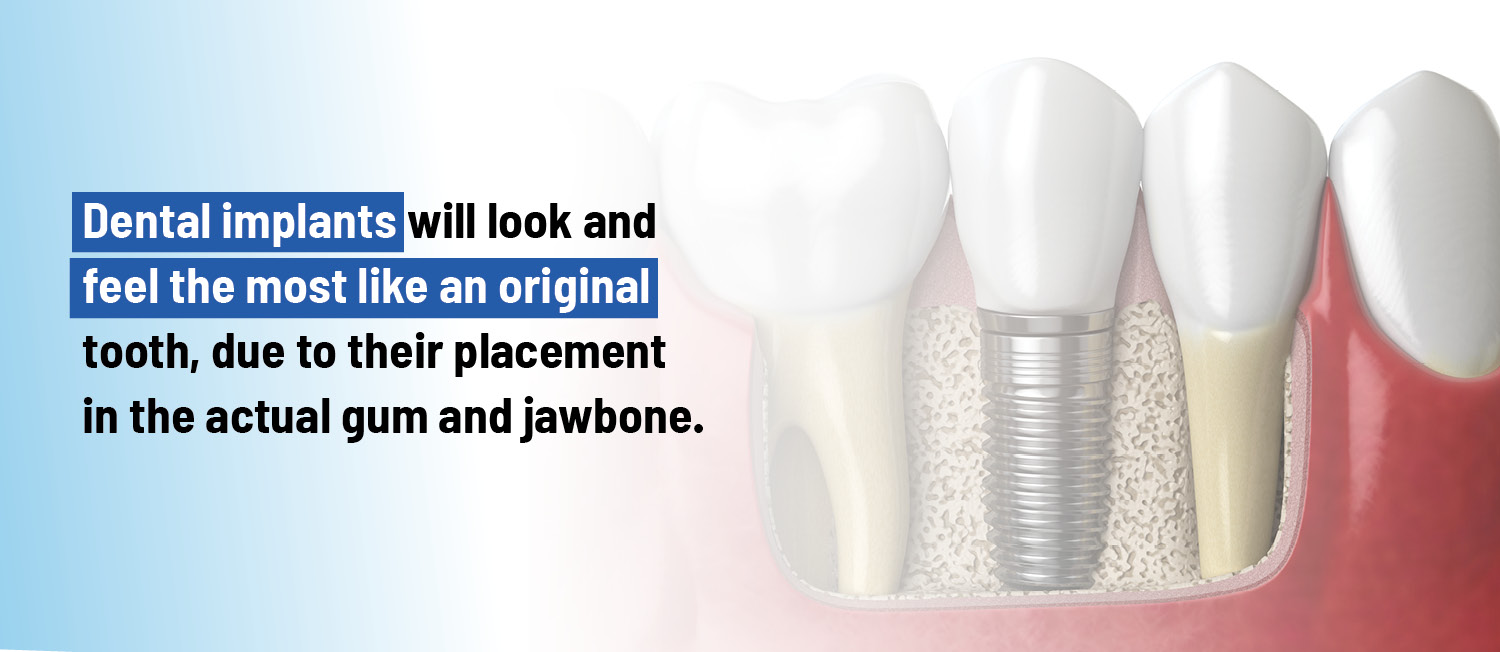Nobody wants a missing tooth. For many people, it’s simply a matter of aesthetics, but there are several functional reasons to replace missing teeth. The extra space in the mouth can cause shifting of adjacent teeth, speech problems, difficulty chewing, and even health problems . For example, research has shown that missing teeth are a risk factor for TMJ disorders , which can lead to headaches, jaw pain, and discomfort.
Whether a tooth is missing due to trauma, congenital factors, or it was pulled out due to decay, it is important to explore options for replacement. In certain cases, Maryland bridges may be a good solution.
What is a Maryland Bridge?
A Maryland bridge is a type of dental bridge that does not require the use of crowns on adjacent teeth, making it unique from a traditional dental bridge. Instead, a ceramic false tooth (called the pontic) is attached to the back of the adjacent teeth with resin bonded metal or ceramic “wings” on both sides. The Maryland bridge is a relatively quick and painless alternative to traditional dental bridges.
The replacement tooth is custom made to match the surrounding teeth and to fit comfortably in the mouth. Unlike a dental implant, the tooth is not attached to the gums.
Who Can Get a Maryland Bridge?
Not everyone is a good candidate for a Maryland bridge. The adjacent teeth must be healthy and strong enough to support the pontic. If a dentist determines that the surrounding teeth are healthy enough, Maryland bridges might be recommended for patients who:
- Need a temporary solution to a missing tooth. Studies have shown that this is a particularly good option for younger patients who are still growing.
- Are not good candidates for dental implants due to issues with bone density or angled tooth roots.
- Only need a single anterior tooth replacement.
- Prefer a non-invasive procedure that does not require anesthesia.

Maryland Bridges vs. Other Tooth Replacement Options
There are a handful of options for replacing missing teeth . If only one or a few teeth are missing, dentists will typically recommend a bridge or a dental implant . Most dental bridges use crowns over the adjacent teeth attached to the false tooth or teeth in the center. A significant portion of the adjacent teeth is removed to do this. For a dental implant, the adjacent teeth are not needed for support and the implant is screwed into the jaw bone.
In cases where many teeth are missing, the dentist may recommend dentures or partial dentures. Dentures consist of removable plates with plastic artificial gums and teeth, which are held in the mouth with clips. The teeth can also be made of porcelain.
Aesthetic Quality
With modern dentistry, all tooth replacement options can be made to appear reasonably real. The dentist will match the color and shape of the original or surrounding teeth before proceeding with any bridge or implant procedures. Dental implants will look and feel the most like an original tooth, due to their placement in the actual gum and jawbone.
Traditional bridges may be more aesthetically pleasing because the crowns can be made to minimize the appearance of mechanism behind the teeth. However, this can vary from person to person and a Maryland bridge may provide very similar aesthetic results.
Dentures are likely to be the least visually appealing option. Clips can sometimes be visible and the plastic gum line may appear artificial.
Procedure
The placement of a Maryland bridge is less invasive and generally much faster than the placement for traditional bridges or implants. Compared to traditional bridges, Maryland bridges require much less of the adjacent teeth to be removed, as well. Only a small amount of enamel is scraped off to bond the wings of the Maryland bridge.
Longevity
The life expectancy of a dental bridge can vary wildly, depending on everything from how well it was initially placed to where it is in the mouth. That said, most estimates range from a conservative 5 years to over 20 years. A promising study by the Australian Dental Journal stated that anterior Maryland bridges had an overall survival rate of 95.1% from 12 to 21 years. Dental implants, on the other hand, can last a lifetime if they are well maintained.
Cost
Per tooth, Maryland bridges will be the most affordable option. Traditional bridges will cost more due to the cost of the crowns and additional time for the procedure. Dental implants are typically the most expensive replacement option per tooth. However, it can be helpful to consider the long term cost of a tooth replacement. While a dental implant may be more expensive now, it can cost less than replacing a bridge multiple times, particularly if the person is still young.
Dentures can be a cheap alternative, but this is generally only a viable alternative if multiple teeth need to be replaced.
What to Expect when Getting a Maryland Bridge
The placement of a Maryland bridge is relatively simple, but the whole process will involve multiple visits to a dental office.
After a dentist confirms that a patient is a good candidate for a Maryland bridge, he or she will need to take impressions of the mouth to get the best fit for the patient. Then, they can send the impressions to a laboratory so that the bridge and pontic can be created. This can take around two weeks. The patient may be sent home with a temporary bridge during this time.
Once the bridge and pontic are ready, the patient comes back and has the temporary bridge removed and the new Maryland bridge is attached by bonding the wings to the adjacent teeth. Afterward, the dentist will check to ensure that the bite is even and feels comfortable.
Find the Best Option for a Missing Tooth
A dentist can determine if a Maryland bridge is the best option for replacing a missing tooth. Make an appointment today to find the best fit.


